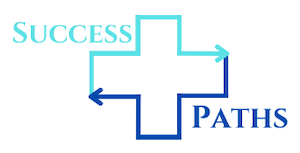Current Research Projects
Dialogue: Pediatric Diagnostic Center of Excellence

Pediatric diagnostic safety is understudied, and overall rates and types of outpatient pediatric diagnostic errors is unknown. The overarching goal of our Diagnostic Center of Excellence is to develop and test innovative methods to increase successes and reduce errors and harm along the diagnostic journey, across multiple settings and providers. The primary aims of this study are to:
- Characterize the diagnostic journey, focusing on successes, errors, and patient/family and clinician communication
- Develop a structured communication intervention for patients/families and clinicians in the outpatient setting
- Evaluate the effectiveness of the intervention to improve patients/family and clinician communication and experience, and to reduce errors and harm
Who will participate?
It is our aim to enroll children with complex care conditions and their families into this study. Once enrolled, the study will consist of an appointment observation, chart reviews, surveys, and an interview with the caregiver.
Contact us at Dialogue@childrens.harvard.edu.
This study is funded by the Agency for Healthcare Research and Quality (AHRQ) (R18HS029346).
SuccessPaths
Background
 Using routine surveillance of medications, lab monitoring, and changes in medication regimens, NINJA has reduced nephrotoxic medication related acute kidney injury by up to 60% at six hospitals. We were able to identify critical modifiable factors about implementation of NINJA/NAKI that predicted success or failure in reducing AKI. We were able to identify TWO pathways to success. One of these two pathways works better in well-resourced hospitals and one works better in lower resources hospitals.
Using routine surveillance of medications, lab monitoring, and changes in medication regimens, NINJA has reduced nephrotoxic medication related acute kidney injury by up to 60% at six hospitals. We were able to identify critical modifiable factors about implementation of NINJA/NAKI that predicted success or failure in reducing AKI. We were able to identify TWO pathways to success. One of these two pathways works better in well-resourced hospitals and one works better in lower resources hospitals.
Study goals
Our overarching goal is to test an approach to improve spread of complex interventions by addressing context and more than one implementation pathway, using NINJA as a model.
To help guide hospitals down these successful pathways, we developed NINJA/NAKI implantation supports called “SuccessPaths”.
This study is funded by the Agency for Healthcare Research and Quality (AHRQ).
Learning Lab
Background
Children are vulnerable to preventable harm caused by healthcare for many reasons, including weight-based medication dosing, handoffs between caregivers, and their limited ability to communicate evolving symptoms. At home, two in five children with chronic disease have a medication error. Of these, 3.6% are injured due to these errors—the same rate as hospitalized children. Among the 165,000 children with type 1 diabetes (T1D) nationally, 20% have poor glycemic control. The leading cause of death before age 30 among individuals with T1D is acute complications (e.g., severe hypoglycemia, diabetic ketoacidosis). One in 68 children have autism spectrum disorder (ASD). Of these children, 40% take antipsychotic medications, and most are not screened for complications.
Study goals
The Ambulatory Pediatric Patient Safety Learning Lab aims to:
- Redesign processes for adjustment of medication dosing based on clinical information gathered by the patient/family to prevent medication errors (this will be studied in type 1 diabetes)
- Create processes for patient/family medication monitoring and communication with clinic to prevent adverse drug events (this will be studied in children with Autism spectrum disorder on antipsychotics)
- Design a workflow to plan for, detect and prompt management of serious illness among children with chronic conditions at home (this will be studied in both populations)
The overarching goal is to redesign systems of care and coordination between the clinic and home to eliminate harm due to healthcare in these settings.
